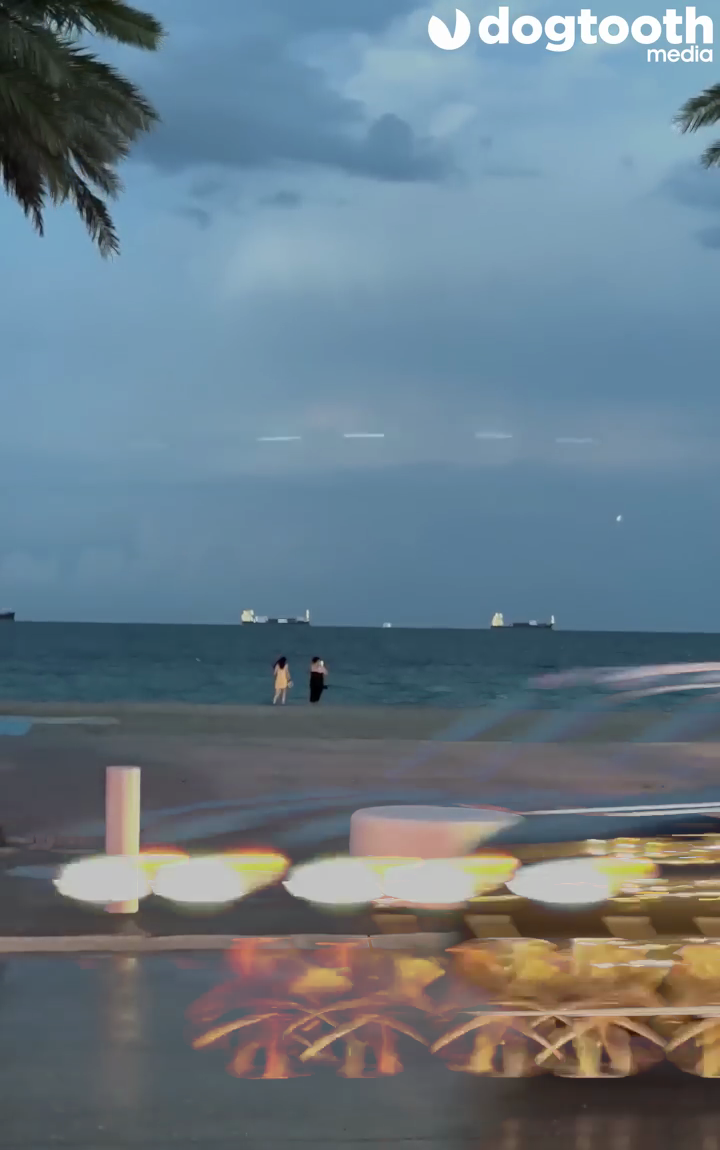It looks like you're using an Ad Blocker.
Please white-list or disable AboveTopSecret.com in your ad-blocking tool.
Thank you.
Some features of ATS will be disabled while you continue to use an ad-blocker.
share:
a reply to: BernnieJGato
When enlarging images avoid using software that resamples (creates pixels between the original pixels to make the image look better) the image, as it will change the original image.
Also, the darker lines above an below the brighter line are most likely a result of the compression algorithm used in the video or by the software you used, as they look like common JPEG compression artefacts.
When enlarging images avoid using software that resamples (creates pixels between the original pixels to make the image look better) the image, as it will change the original image.
Also, the darker lines above an below the brighter line are most likely a result of the compression algorithm used in the video or by the software you used, as they look like common JPEG compression artefacts.
a reply to: Ophiuchus1
That could also be a result of the video compression. Some video compression algorithms change only the more obvious pixels and keep the rest of the image the same as it was before, updating the rest of the image either at a specific frequency or when there's a change of a large number of pixels.
That could also be a result of the video compression. Some video compression algorithms change only the more obvious pixels and keep the rest of the image the same as it was before, updating the rest of the image either at a specific frequency or when there's a change of a large number of pixels.
a reply to: Ophiuchus1
I'll repeat the same thing I said to BernnieJGato:
when enlarging images avoid using software that resamples (creates pixels between the original pixels to make the image look better) the image, as it will change the original image.
This is how I see it on the frames I took from the video (by downloading the YouTube video and using Avidemux).

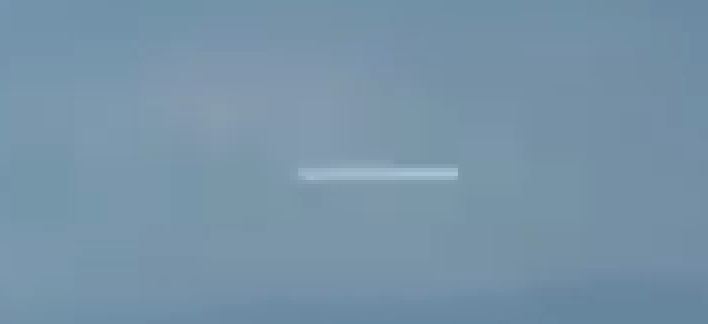
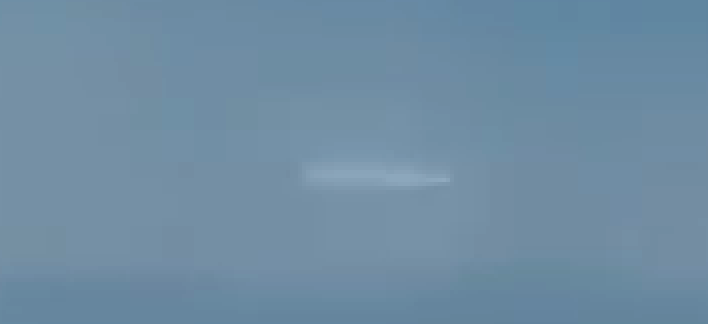
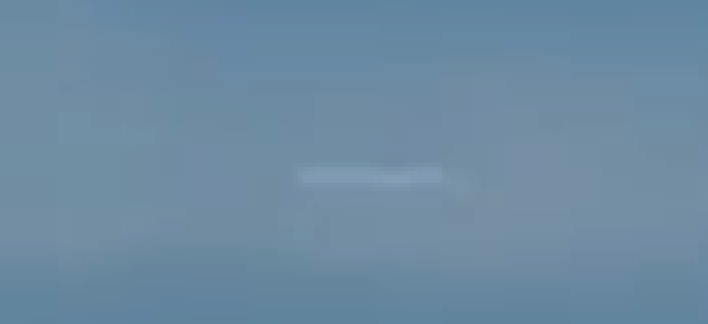
As you can see there are some differences in the way it looks when resized without resampling.
I'll repeat the same thing I said to BernnieJGato:
when enlarging images avoid using software that resamples (creates pixels between the original pixels to make the image look better) the image, as it will change the original image.
This is how I see it on the frames I took from the video (by downloading the YouTube video and using Avidemux).




As you can see there are some differences in the way it looks when resized without resampling.
originally posted by: TDDAgain
Looks like the car's light is responsible or light reflecting of the chrome on the car.
Why only that car creates that effect and not the other three?
Sensor is oversaturated by the light source, that's also why the streak changes angles and vanishes when the car light. The lense is concave at as the angle from the car light changes, it traverses the curve over the lense.
Aren't lens reflections mirrored in relation to the centre of the lens? If this was a kind of lens reflection I would expect it to be as close to the top edge of the frame as the car lights are to the bottom edge.
There are other artifacts in the video, if the light streak in the clouds is considered a unidentified "flying" object, then I have to conclude that all the other light streaks could be tiny unidentified "flying" object, too.
What other light streaks? Could you point to them?
Thanks in advance.
a reply to: Xtrozero
Don't base your interpretation on an animated GIF, as those have only 256 colours so when the colours are too similar they will appear as the same, resulting in a loss of resolution and, in some cases, changes of shape.
Sometimes, even the video compression is enough to create that effect.
Don't base your interpretation on an animated GIF, as those have only 256 colours so when the colours are too similar they will appear as the same, resulting in a loss of resolution and, in some cases, changes of shape.
Sometimes, even the video compression is enough to create that effect.
a reply to: RedPanda94
Posts like this do nothing for the credibility of things that are actually being seen.
This is BS. At 10,000 mph there would be a shockwave. There isn't one in the picture.
Posts like this do nothing for the credibility of things that are actually being seen.
This is BS. At 10,000 mph there would be a shockwave. There isn't one in the picture.
originally posted by: Xtrozero
originally posted by: Ophiuchus1
The slightly moving up and down is amplified in my zoomed example
Totally in sync with the headlights, most definitely a glare artifact.
The only thing is that the guy sees it and comments on it in real time. This would be true if he was looking at the screen, but very hard to see in real time that small. Most people filming big landscapes have their phone out a ways. It's possible, but it still looks like some weird natural phenomenon due to the storm. It's also possible that he just made the comment in anticipation of putting a UFO in.
In any case, nothing indicates anything craft-like to me. Just a freak electrical jump or lame cgi.
Or possibly just a searchlight from a ship scanning the clouds.
a reply to: Ophiuchus1
As I said on my first post on this thread, an insect.
Or it can always be a fake, but I think a fake would look better.
As I said on my first post on this thread, an insect.
Or it can always be a fake, but I think a fake would look better.
a reply to: Ophiuchus1
I don't think that could explain it.
As I see it, for this to be a reflection on the lens from light from the car, it would appear because of the light being strong when compared to the surroundings, and all cars show that.
Yes, different shapes could result in stronger or weaker reflections, but we don't see a thing from the other cars.
I don't think that could explain it.
As I see it, for this to be a reflection on the lens from light from the car, it would appear because of the light being strong when compared to the surroundings, and all cars show that.
Yes, different shapes could result in stronger or weaker reflections, but we don't see a thing from the other cars.
I don't think it would need to be misaligned. Some headlamps produce more light and have different lighting patterns. I learned that from watching this video:
originally posted by: hotspace
If the car passing had a misaligned headlight, it would make sense that this is just lens flare. The speed of the flare passing towards to the right, matches the headlight passing to the left.
Amazon Headlight Bulbs are Getting Out of Hand
If headlights were all created equal, you would have a good point. But I don't think the headlights in the three cars are equal, and I don't think you can tell exactly how bright they are from the video once the sensor is saturated. Here's an example, can you tell by the brightness of the lights on the bottom which ones are going to make reflections at the top?
originally posted by: ArMaP
originally posted by: McGinty
2. The light coincides with the passing car and is moving approx the same speed across the screen (albeit in the opposite direction), so could it be a reflection from the car’s alloy trim?
I don't think so, as I think we would see some kind of reflection from the other three cars that appear in the video.
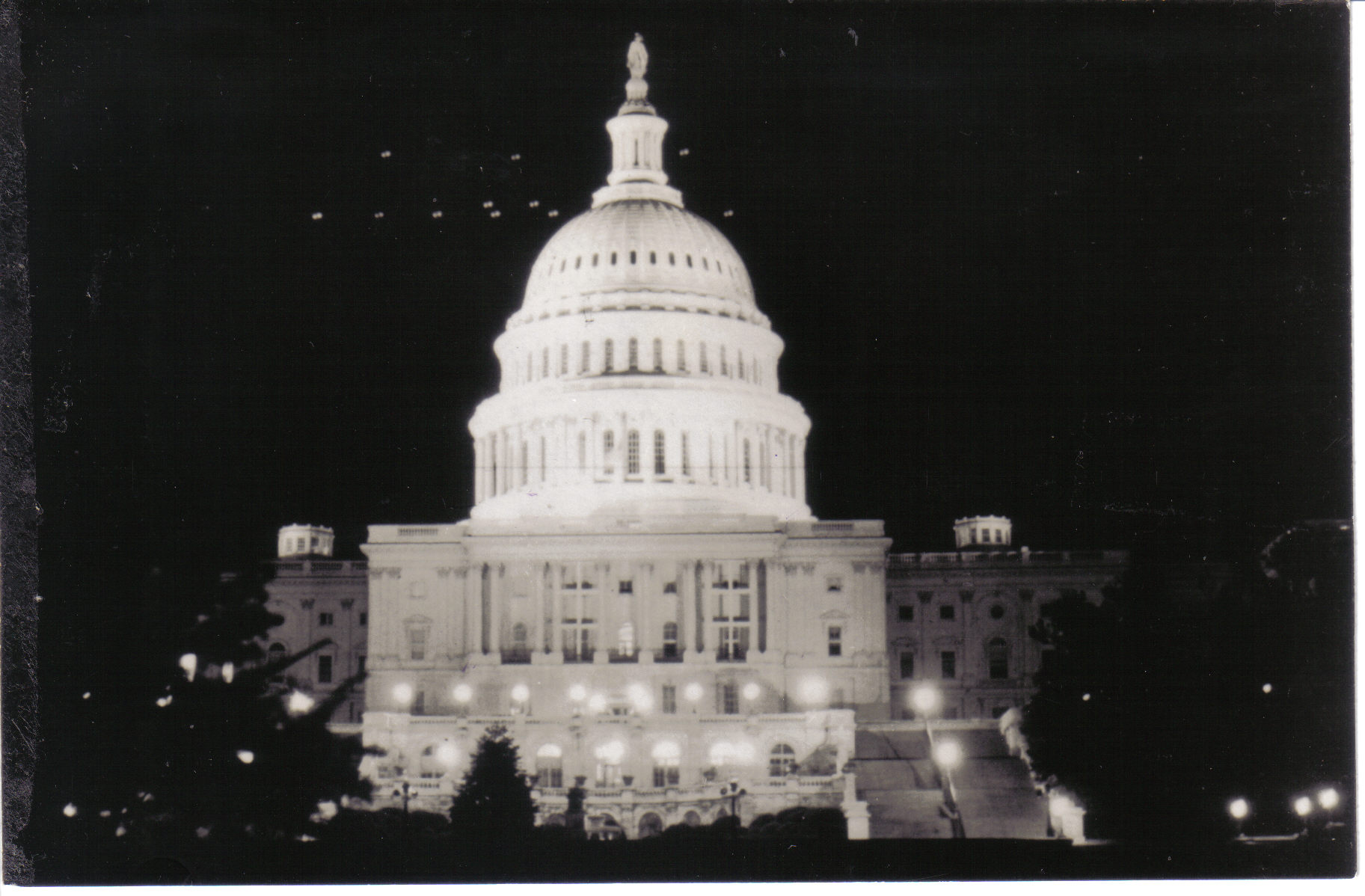
I suggest we can't tell, and the reason is we can't really tell which lights are brighter once the image is saturated. The extra photons from the brighter lights don't do anything to the image of the original lights once saturation is achieved, but they do have an effect on the reflections. So by looking at the reflections, you can tell which lights are brighter, and for some reason, the less bright lights don't seem to produce a dimmer reflection. This may help to identify which lights are and aren't making reflections:
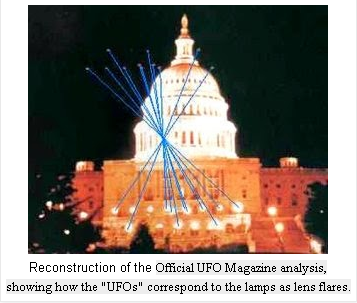
Some things to look for:
1. Before the second car comes into view, do you see some light shooting off to the side of the car away from the camera, toward the beach? It seems like maybe it's coming from the car that appears under the UFO, and if so, it's shooting more light off to the sides than the other car, presumably, if the lighting is somewhat symmetrical. It's something I don't see with the other cars.
2. When the second car comes into view, look at the area around the headlight.there appears to me more glare in the area immediately around the headlight, which glare is also not apparent around the headlights of the other two cars, so it may actually be sending more light to the sides.
3. If it was an original video with no image stabilization, the lens flare geometry would be close but not an exact match, still close enough to raise suspicion. But we can't assume either one of those, since almost all if not all smart phones these days have some image stabilization. Also, the video may be cropped. Standard smart phones these days normally would produce an image with a larger height to width ratio than what's seen, something on the order of 1.8 to 1 and the aspect ratio of the UFO video is less than 1.6 to one (I get 1.58:1 which is not an aspect ratio for any smart phone I know of) which makes me suspect it could be cropped. if we had the whole image, maybe the lens flare geometry wouldn't be a little off.

I'm not sure it's lens flare, but there are several things pointing to that possibility and your normally persuasive argument doesn't rule it out for me yet due to the differences in the lights. Why don't all the lights show up as reflections in the Washington DC photo?
a reply to: RedPanda94
That's a rare phenomenon to catch on camera. Way more rare than catching a green flash at sunset.
The thunderstorm is a dead giveaway.
That's a rare phenomenon to catch on camera. Way more rare than catching a green flash at sunset.
The thunderstorm is a dead giveaway.
Rocket lightning is a form of cloud discharge, generally horizontal and at cloud base, with a luminous channel appearing to advance through the air with visually resolvable speed, often intermittently
edit on 26-8-2023 by Degradation33 because: (no reason given)
originally posted by: Arbitrageur
If headlights were all created equal, you would have a good point. But I don't think the headlights in the three cars are equal, and I don't think you can tell exactly how bright they are from the video once the sensor is saturated.
If the sensor was saturated then it reached the maximum it could detect, right?
If the sensor was saturated by the lights of the second car (which show an average lightness of 195) then it was also saturated on the lights of the other three cars, as all cars headlights show an average lightness of 195.
The brighter areas of the ships in the background show an higher lightness (around 200) as does the aeroplane light, so I don't think we can say for sure that the headlights of the cars in the video were saturating the sensor.
Here's an example, can you tell by the brightness of the lights on the bottom which ones are going to make reflections at the top?
I suggest we can't tell, and the reason is we can't really tell which lights are brighter once the image is saturated. The extra photons from the brighter lights don't do anything to the image of the original lights once saturation is achieved, but they do have an effect on the reflections. So by looking at the reflections, you can tell which lights are brighter, and for some reason, the less bright lights don't seem to produce a dimmer reflection. This may help to identify which lights are and aren't making reflections:
Don't forget that this effect affects much more the central part of the lens than the edges, so lights with the same brightness but close to the edges would be less likely to create a lens flare.
Some things to look for:
1. Before the second car comes into view, do you see some light shooting off to the side of the car away from the camera, toward the beach? It seems like maybe it's coming from the car that appears under the UFO, and if so, it's shooting more light off to the sides than the other car, presumably, if the lighting is somewhat symmetrical. It's something I don't see with the other cars.
Wouldn't a stronger light create a bigger halo around the car's headlight? They all look the same. Even the last car, that passes on the lane closest to the camera doesn't show any signs of being brighter.
2. When the second car comes into view, look at the area around the headlight.there appears to me more glare in the area immediately around the headlight, which glare is also not apparent around the headlights of the other two cars, so it may actually be sending more light to the sides.
It doesn't look to have more glare than the third car.
3. If it was an original video with no image stabilization, the lens flare geometry would be close but not an exact match, still close enough to raise suspicion. But we can't assume either one of those, since almost all if not all smart phones these days have some image stabilization. Also, the video may be cropped. Standard smart phones these days normally would produce an image with a larger height to width ratio than what's seen, something on the order of 1.8 to 1 and the aspect ratio of the UFO video is less than 1.6 to one (I get 1.58:1 which is not an aspect ratio for any smart phone I know of) which makes me suspect it could be cropped. if we had the whole image, maybe the lens flare geometry wouldn't be a little off.
I get 1.5972:1 (720 x 1150) from the frames saved by Avidemux.
I'm not sure it's lens flare, but there are several things pointing to that possibility and your normally persuasive argument doesn't rule it out for me yet due to the differences in the lights. Why don't all the lights show up as reflections in the Washington DC photo?
As I said above, not all lights create this type of lens flare, the ones closer to the edges are much less likely to create that effect than those near the centre of the frame.
As for this being lens flare I'm not pro or against it, as some things point to a "yes" but other things point to a "no".
For example, it does look like the "object" does match the car's headlights, but with some variation, and the central point appears much lower than it should.
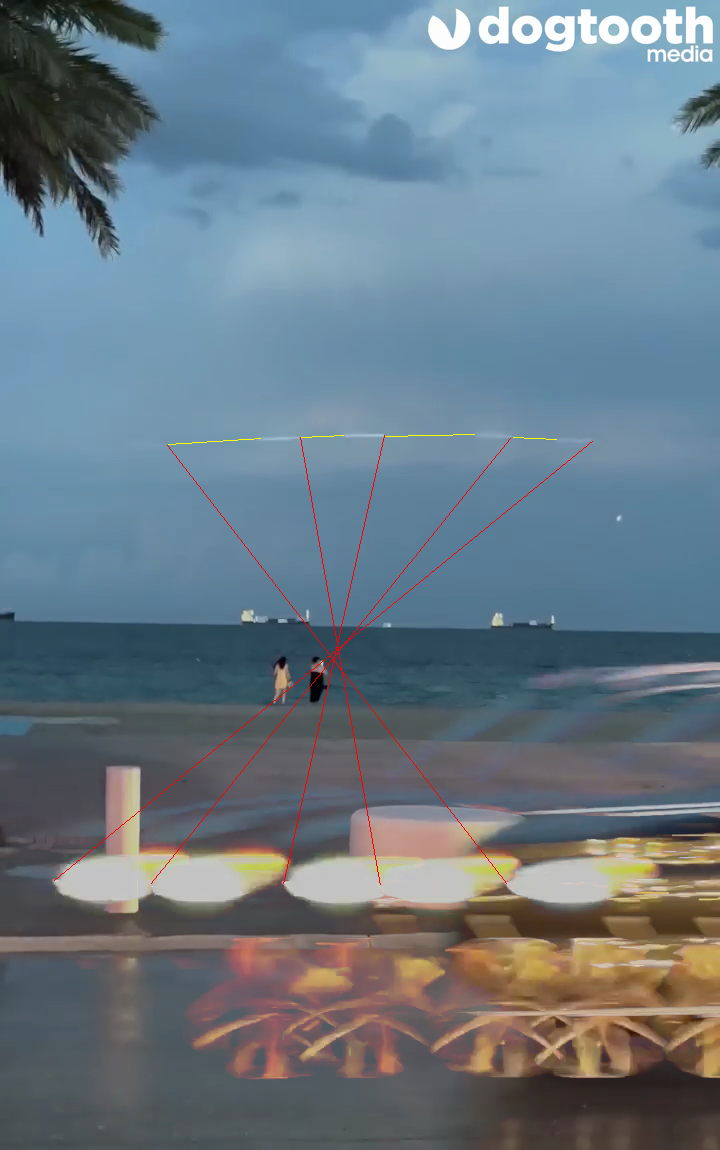
And why does the "object" appears to follow a curved path (marked in yellow in the image above)?
I suppose this will remain a mystery.
new topics
-
Those Great Fresh Pet Commercials
Television: 4 hours ago -
S.C. Jack Smith's Final Report Says Trump Leads a Major Conspiratorial Criminal Organization!.
Political Conspiracies: 5 hours ago -
Advice for any young Adult .
General Chit Chat: 7 hours ago -
Joe meant what he said about Hunter's pardon....
US Political Madness: 7 hours ago -
Regent Street in #London has been evacuated due to a “bomb threat.”
Other Current Events: 8 hours ago -
It’s Falling…
Philosophy and Metaphysics: 10 hours ago
top topics
-
Steering the Titantic from the Drydock.
Rant: 13 hours ago, 10 flags -
Joe meant what he said about Hunter's pardon....
US Political Madness: 7 hours ago, 10 flags -
Advice for any young Adult .
General Chit Chat: 7 hours ago, 10 flags -
S.C. Jack Smith's Final Report Says Trump Leads a Major Conspiratorial Criminal Organization!.
Political Conspiracies: 5 hours ago, 9 flags -
It’s Falling…
Philosophy and Metaphysics: 10 hours ago, 4 flags -
Regent Street in #London has been evacuated due to a “bomb threat.”
Other Current Events: 8 hours ago, 3 flags -
Those Great Fresh Pet Commercials
Television: 4 hours ago, 2 flags
active topics
-
Los Angeles brush fires latest: 2 blazes threaten structures, prompt evacuations
Mainstream News • 56 • : BeyondKnowledge3 -
Advice for any young Adult .
General Chit Chat • 16 • : grey580 -
S.C. Jack Smith's Final Report Says Trump Leads a Major Conspiratorial Criminal Organization!.
Political Conspiracies • 30 • : TzarChasm -
Claim: General Mark Milley Approved Heat and Sound Directed Energy Weapons During 2020 Riots
Whistle Blowers and Leaked Documents • 31 • : fringeofthefringe -
Those Great Fresh Pet Commercials
Television • 3 • : nerbot -
House Passes Laken Riley Act
Mainstream News • 20 • : matafuchs -
Remember These Attacks When President Trump 2.0 Retribution-Justice Commences.
2024 Elections • 140 • : matafuchs -
What Comes After January 20th
Mainstream News • 27 • : NoCorruptionAllowed -
Post A Funny (T&C Friendly) Pic Part IV: The LOL awakens!
General Chit Chat • 8004 • : KrustyKrab -
Planned Civil War In Britain May Be Triggered Soon
Social Issues and Civil Unrest • 18 • : AdultMaleHumanUK

